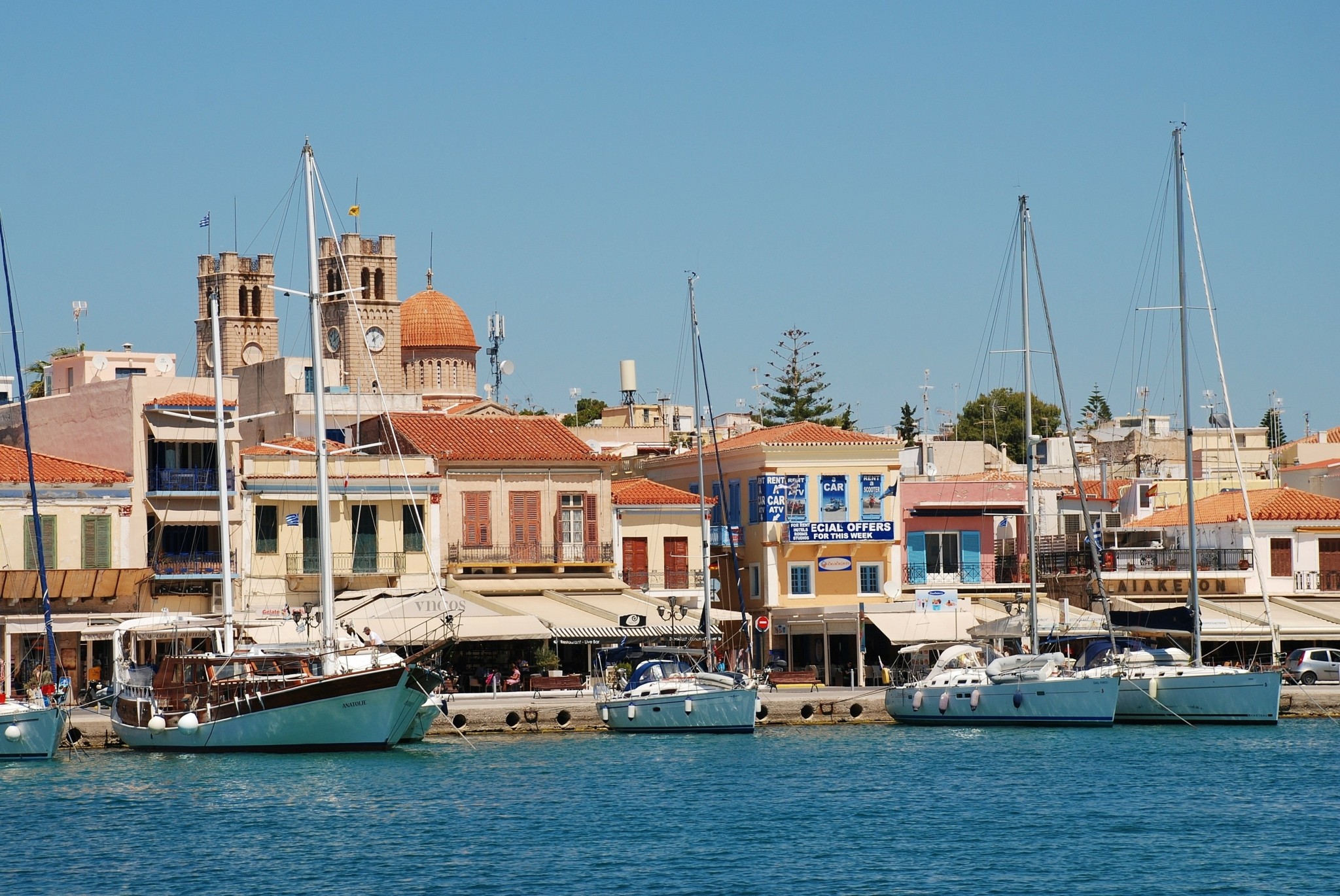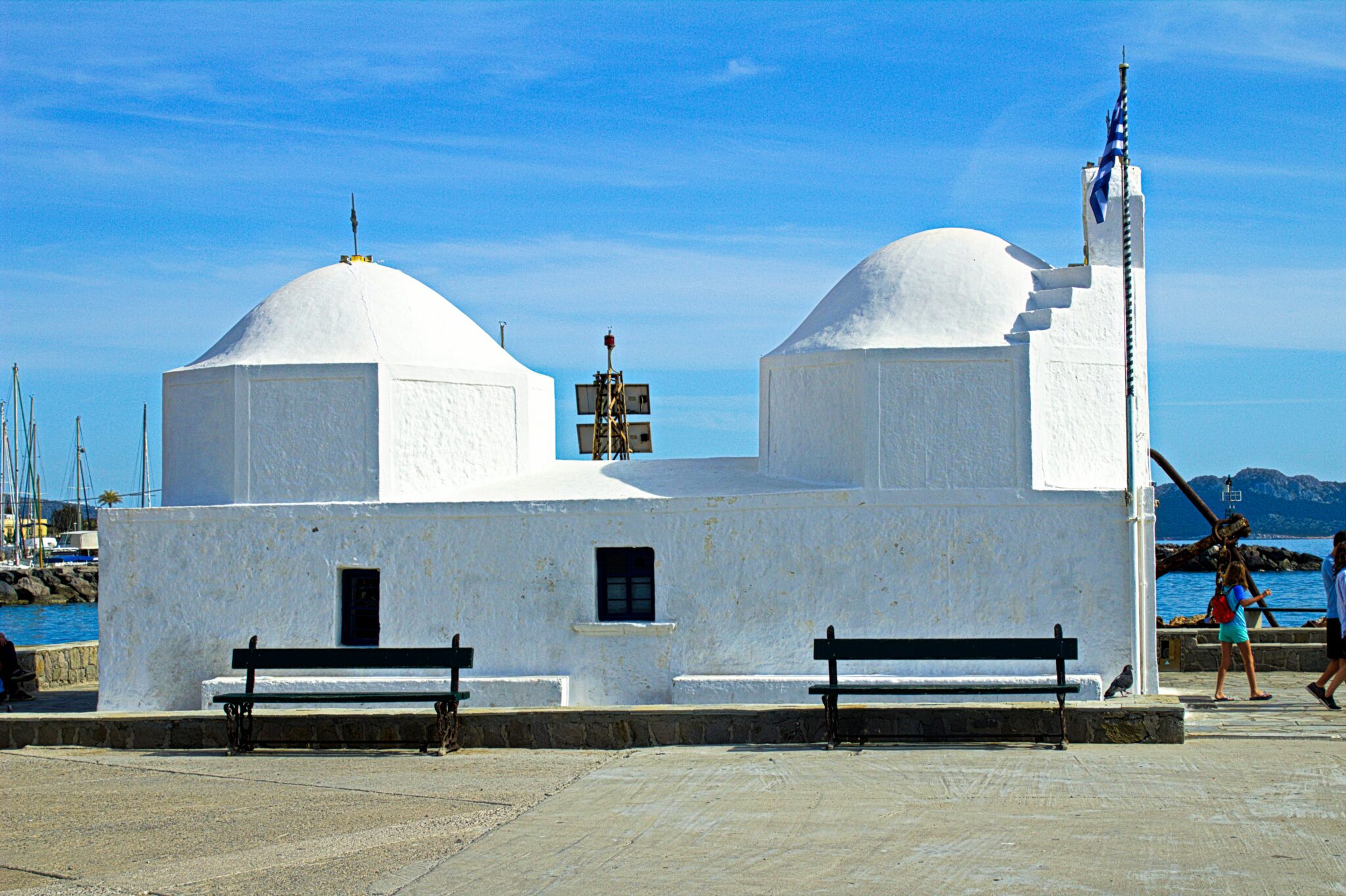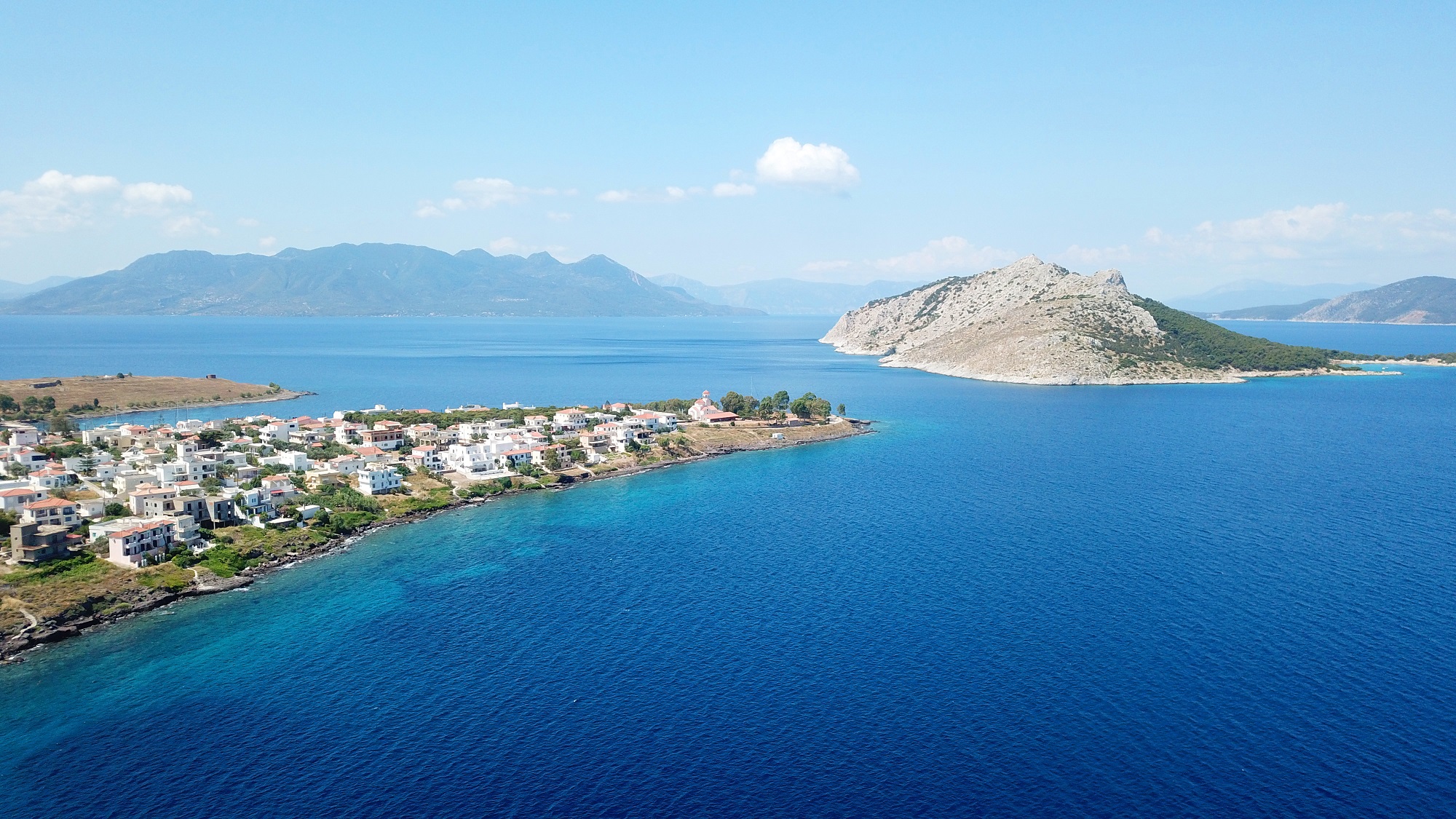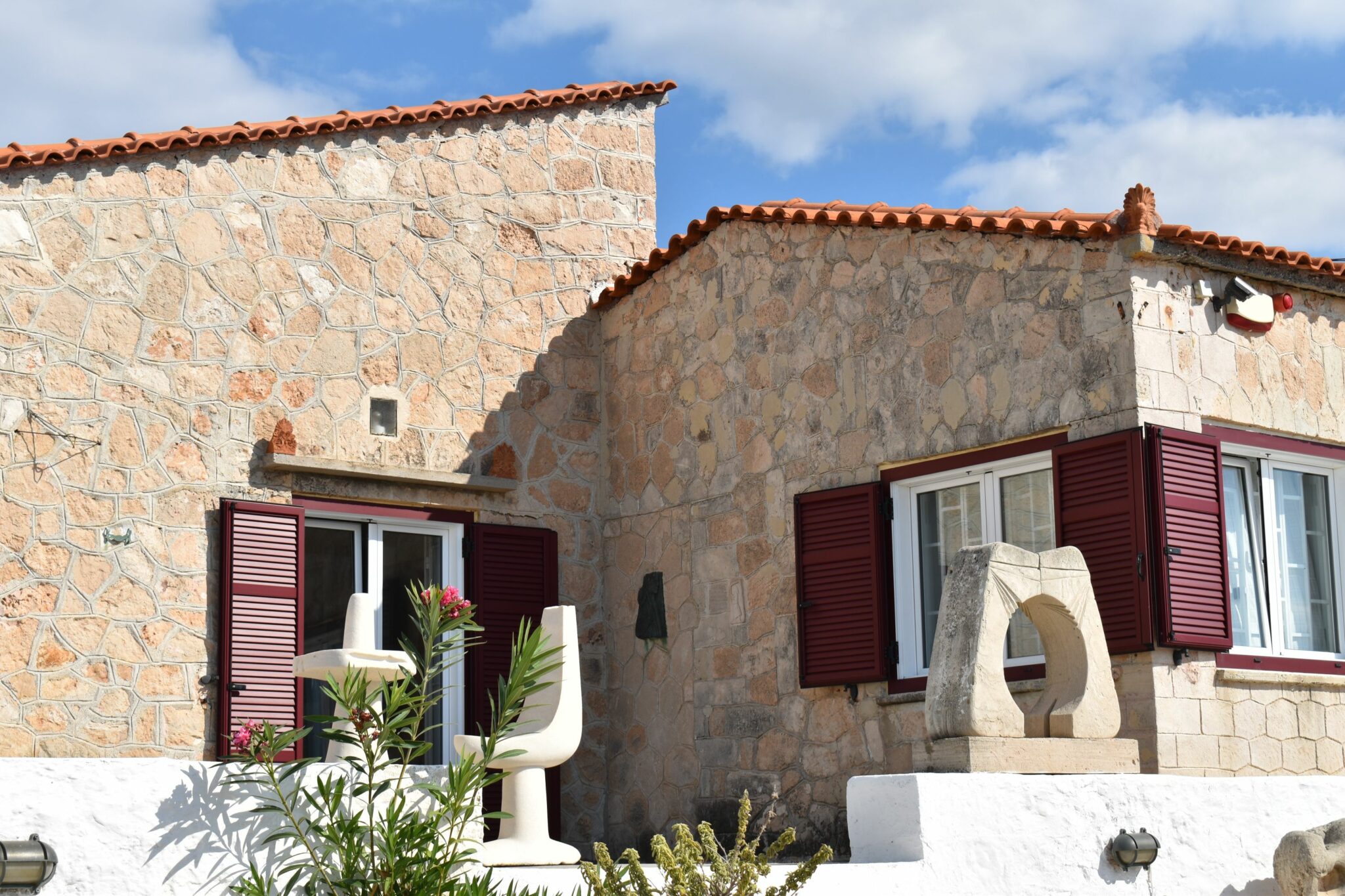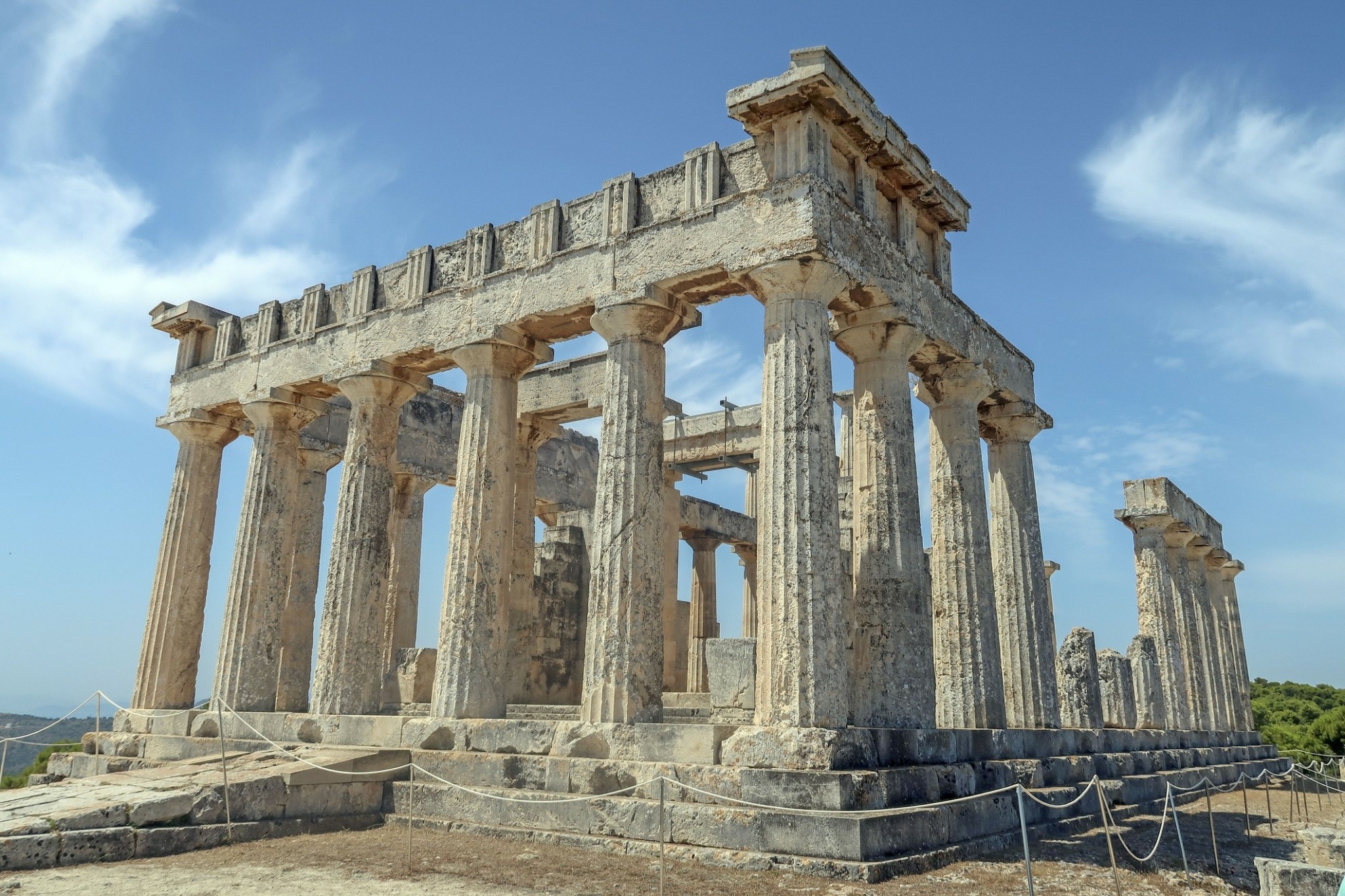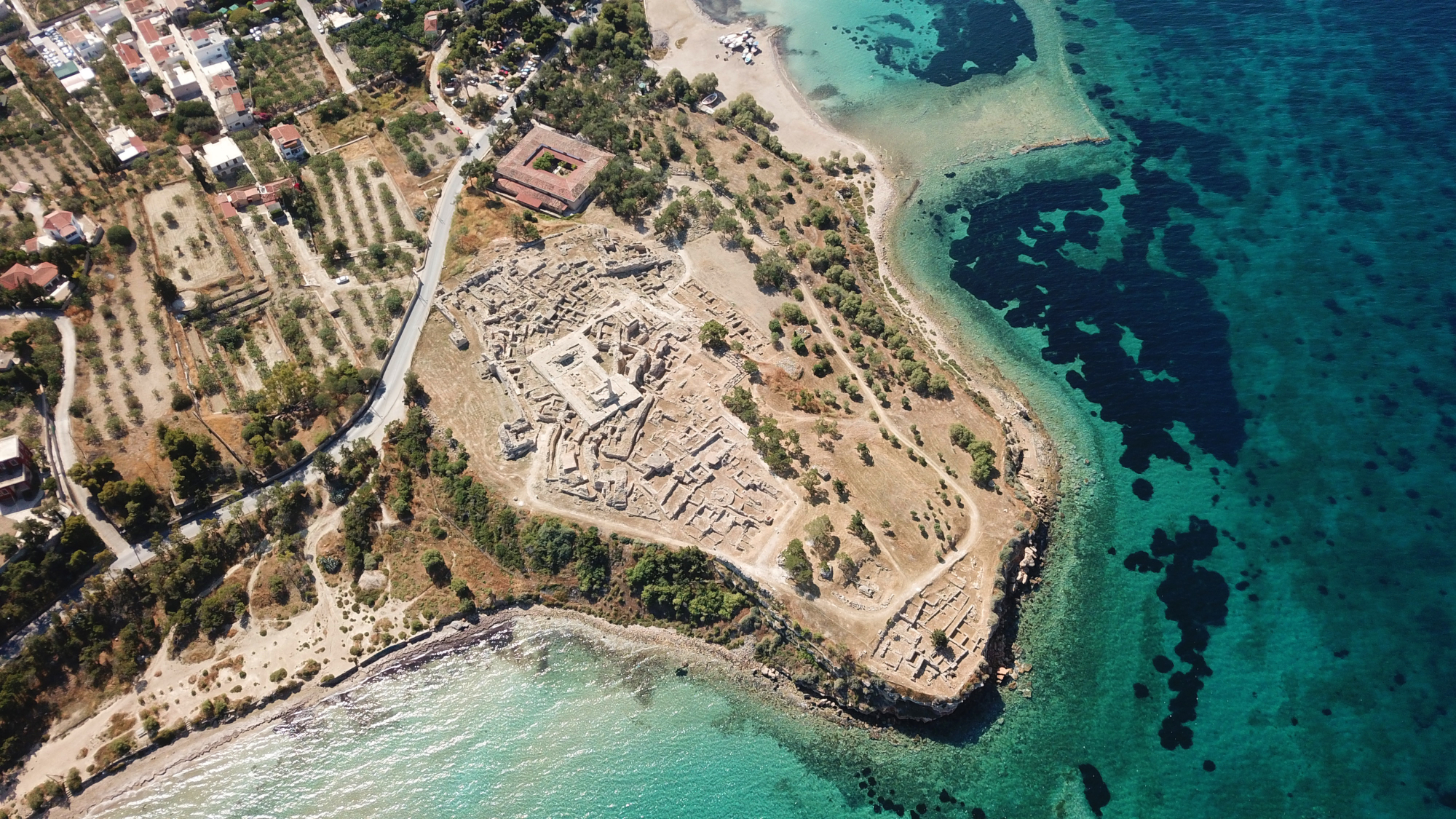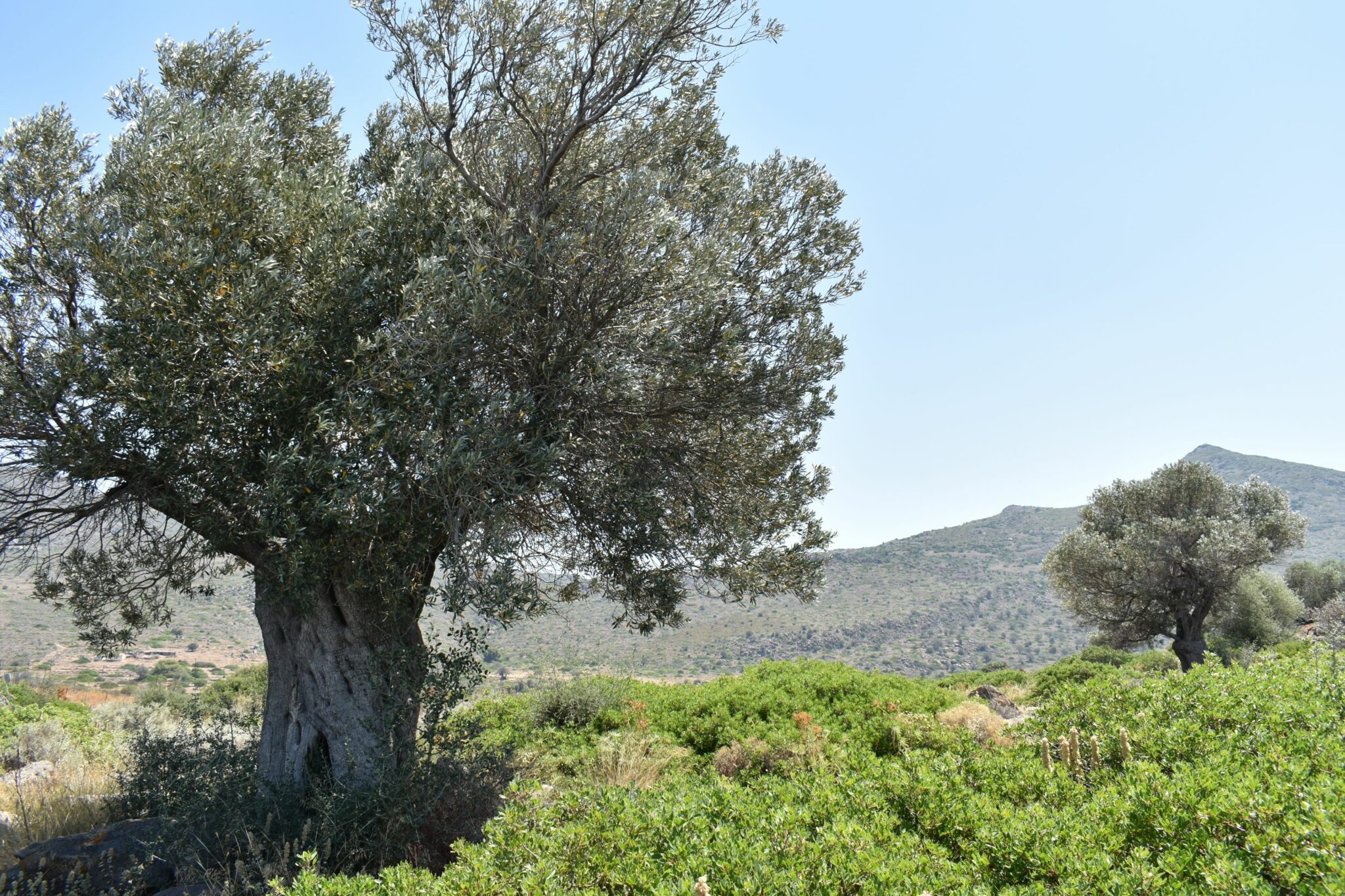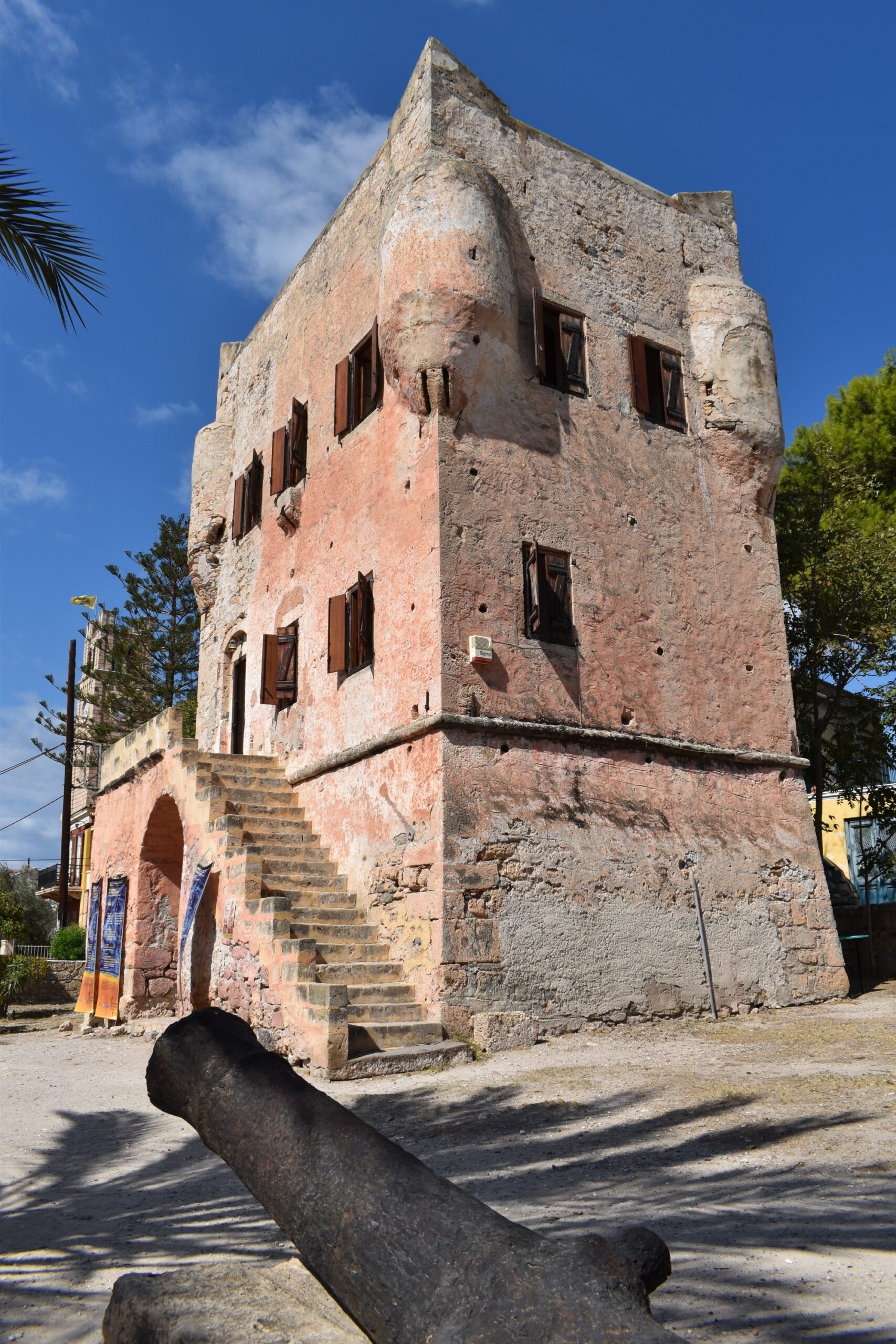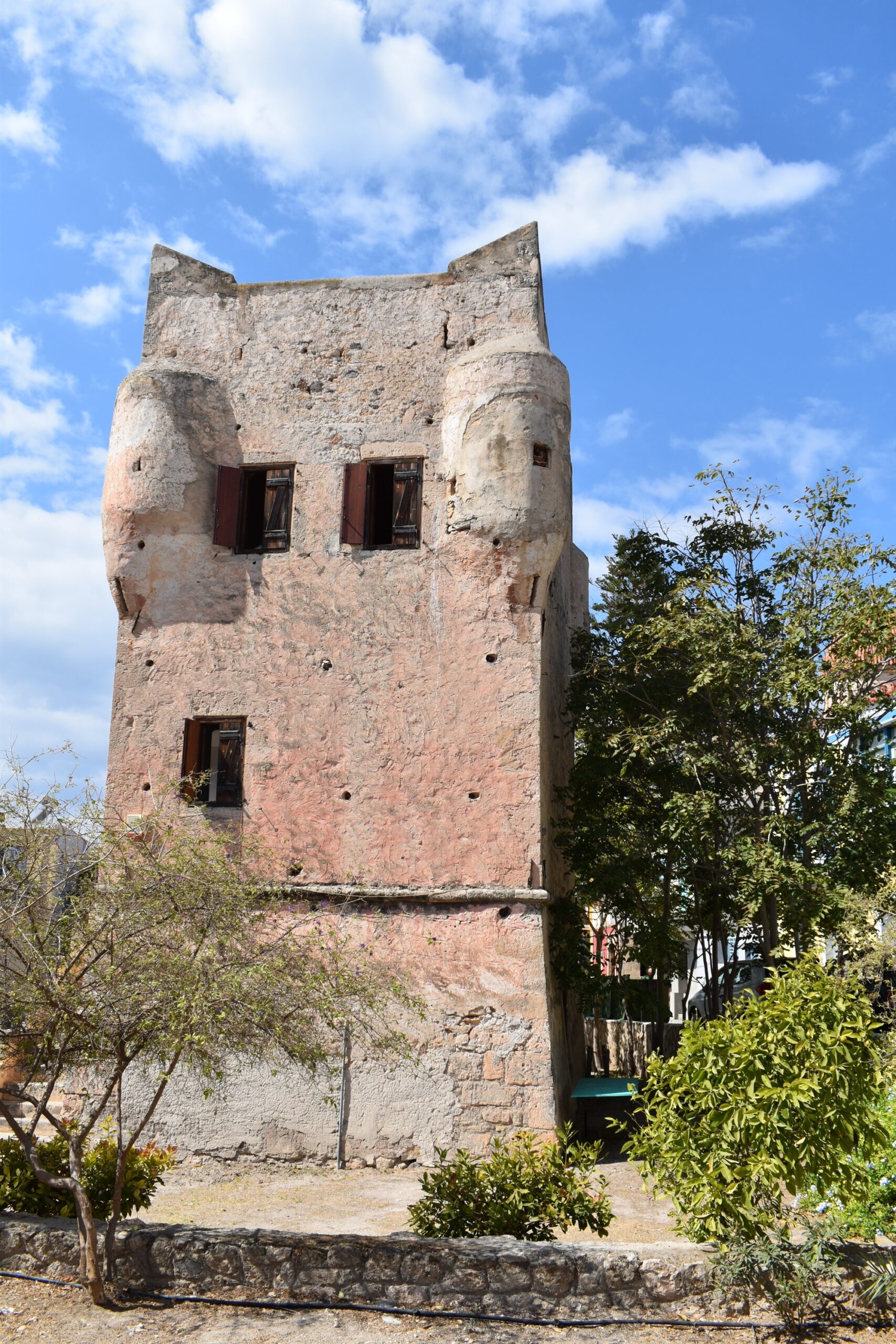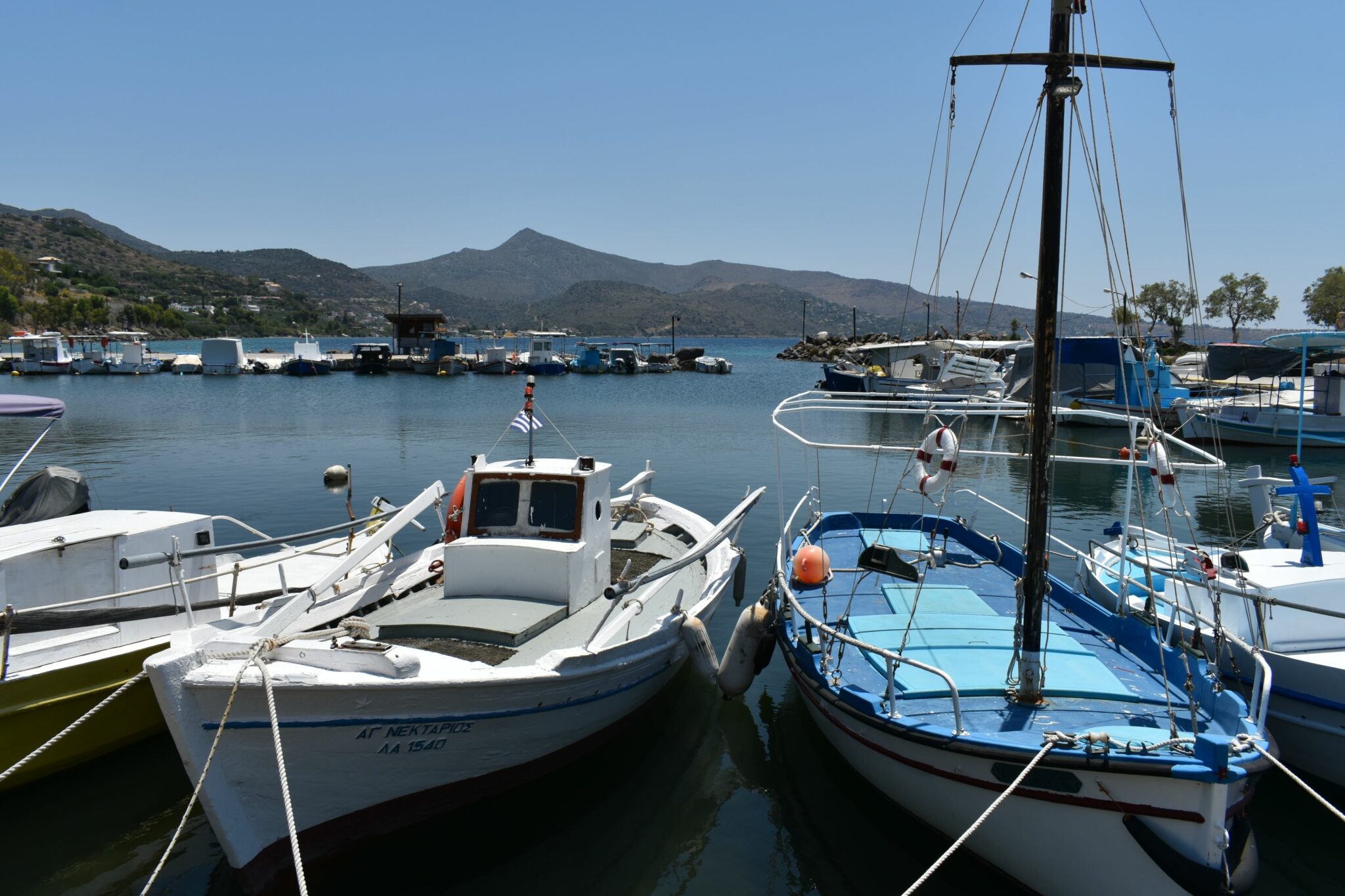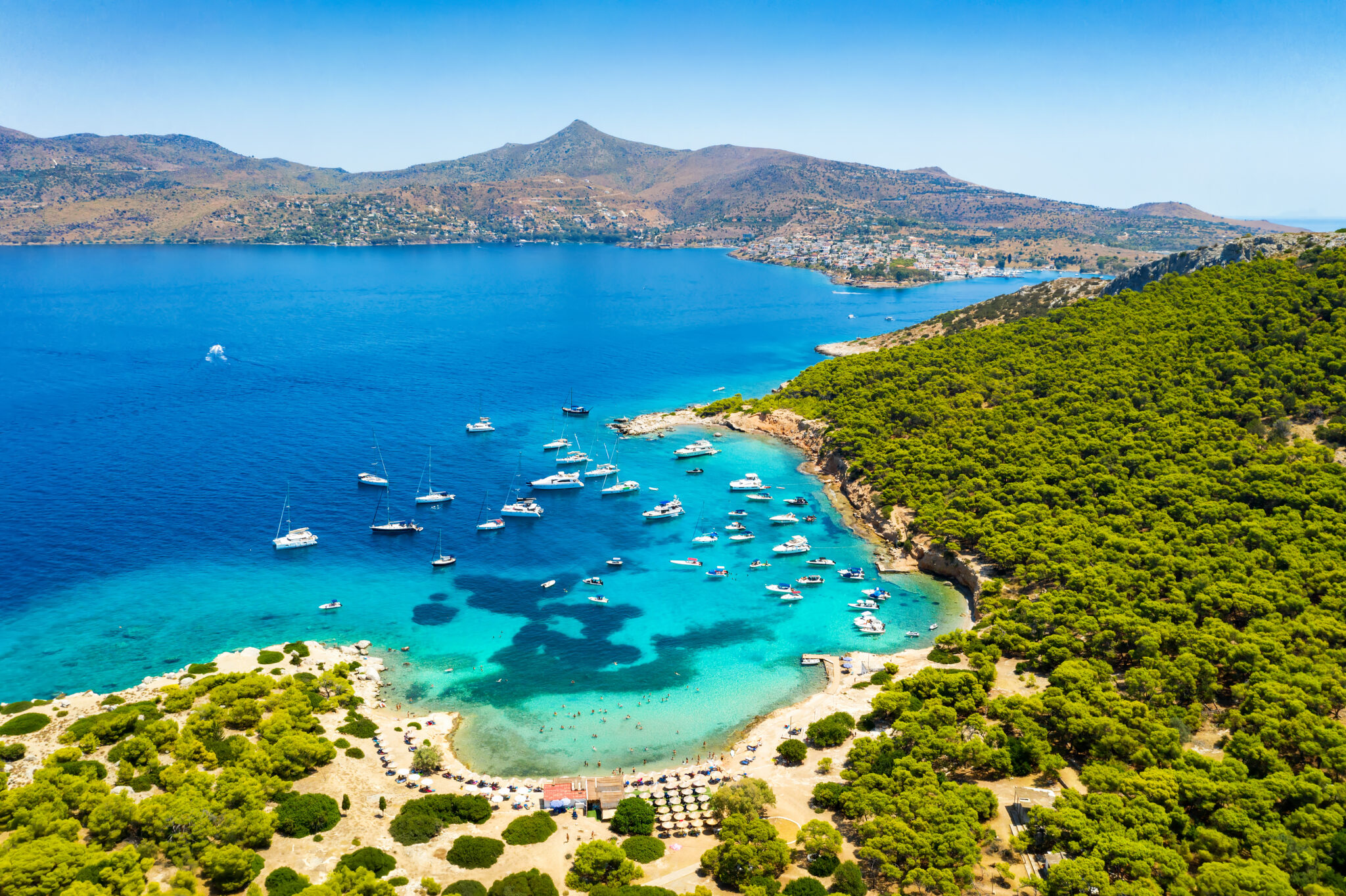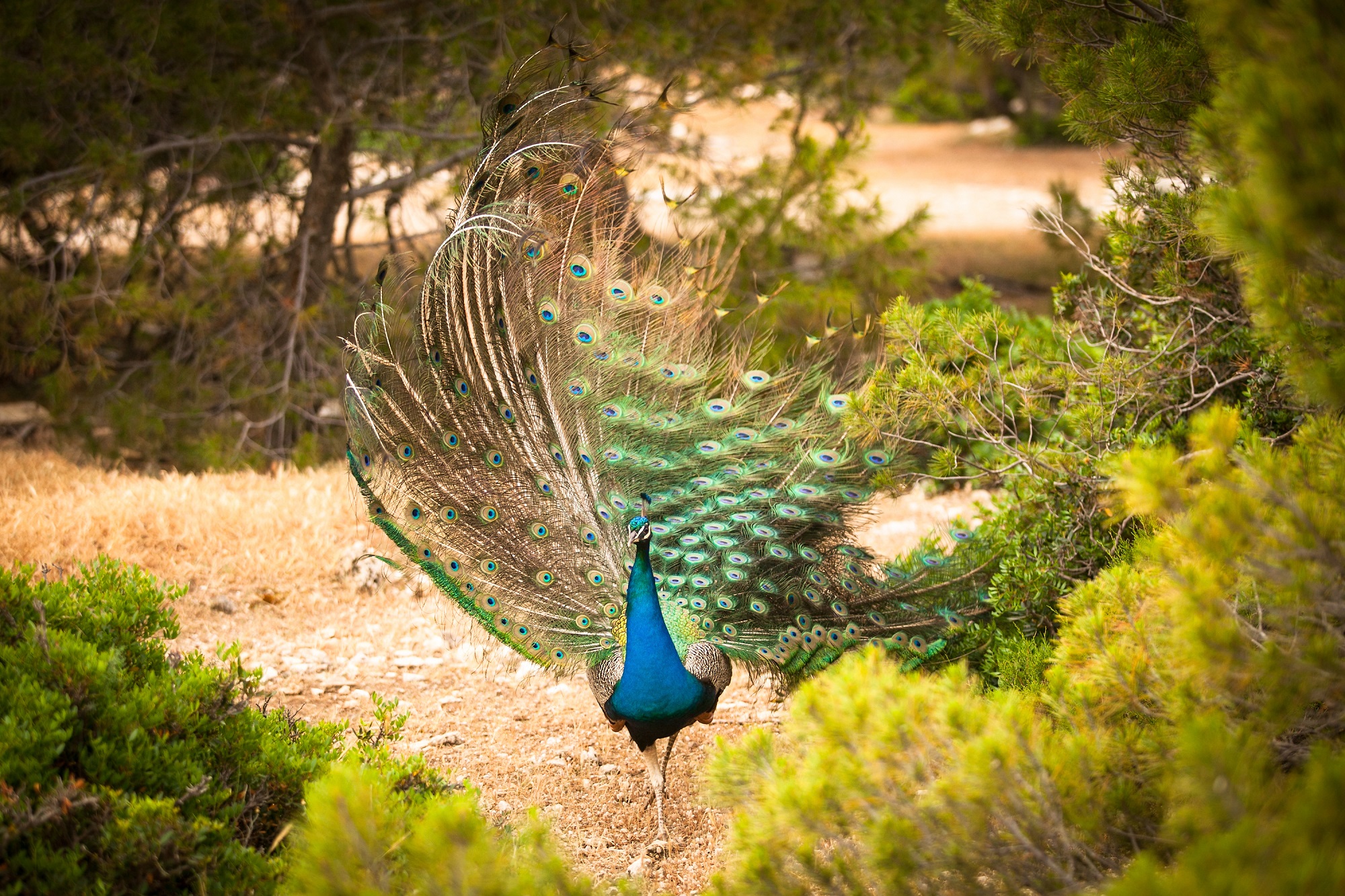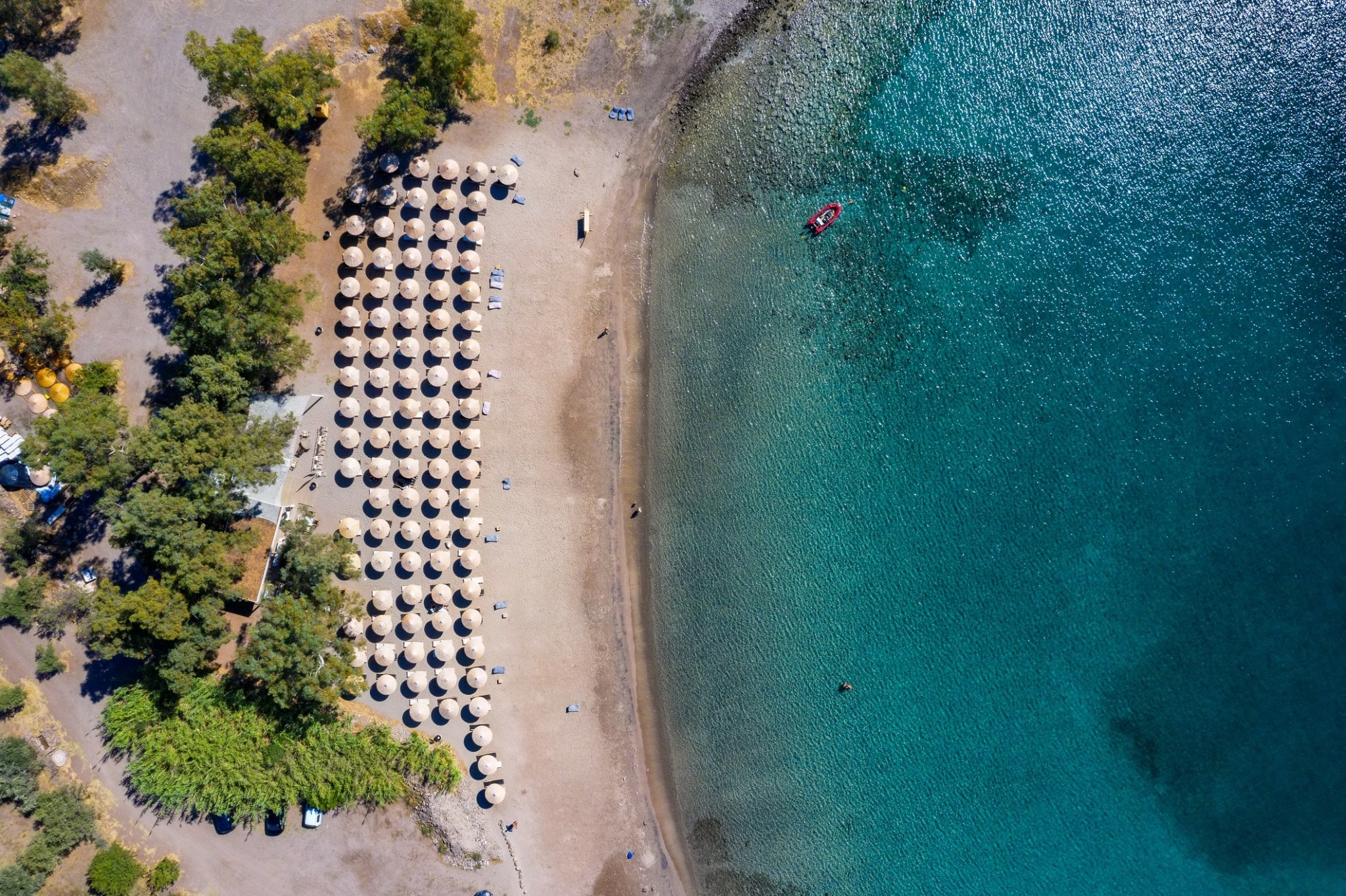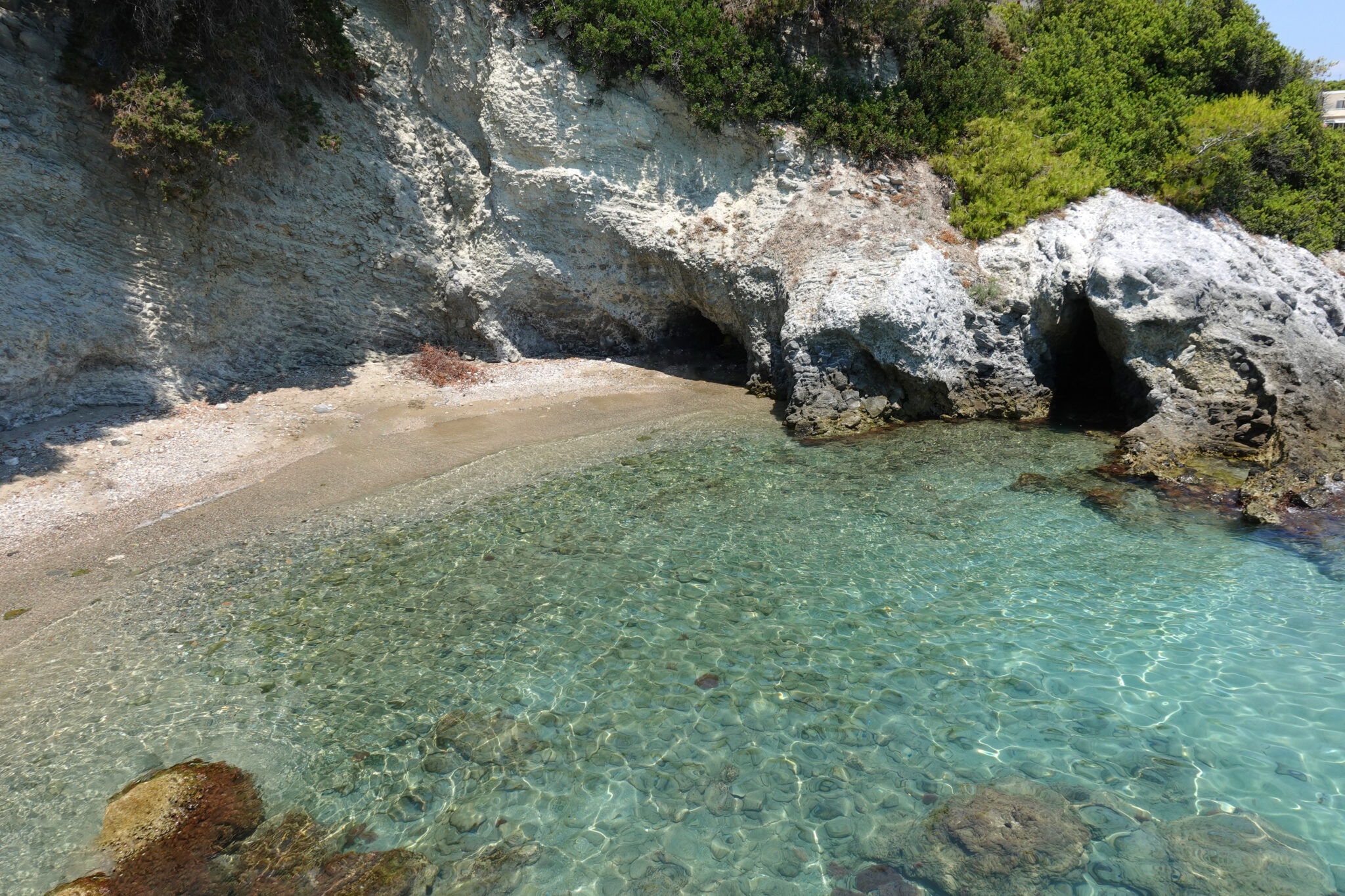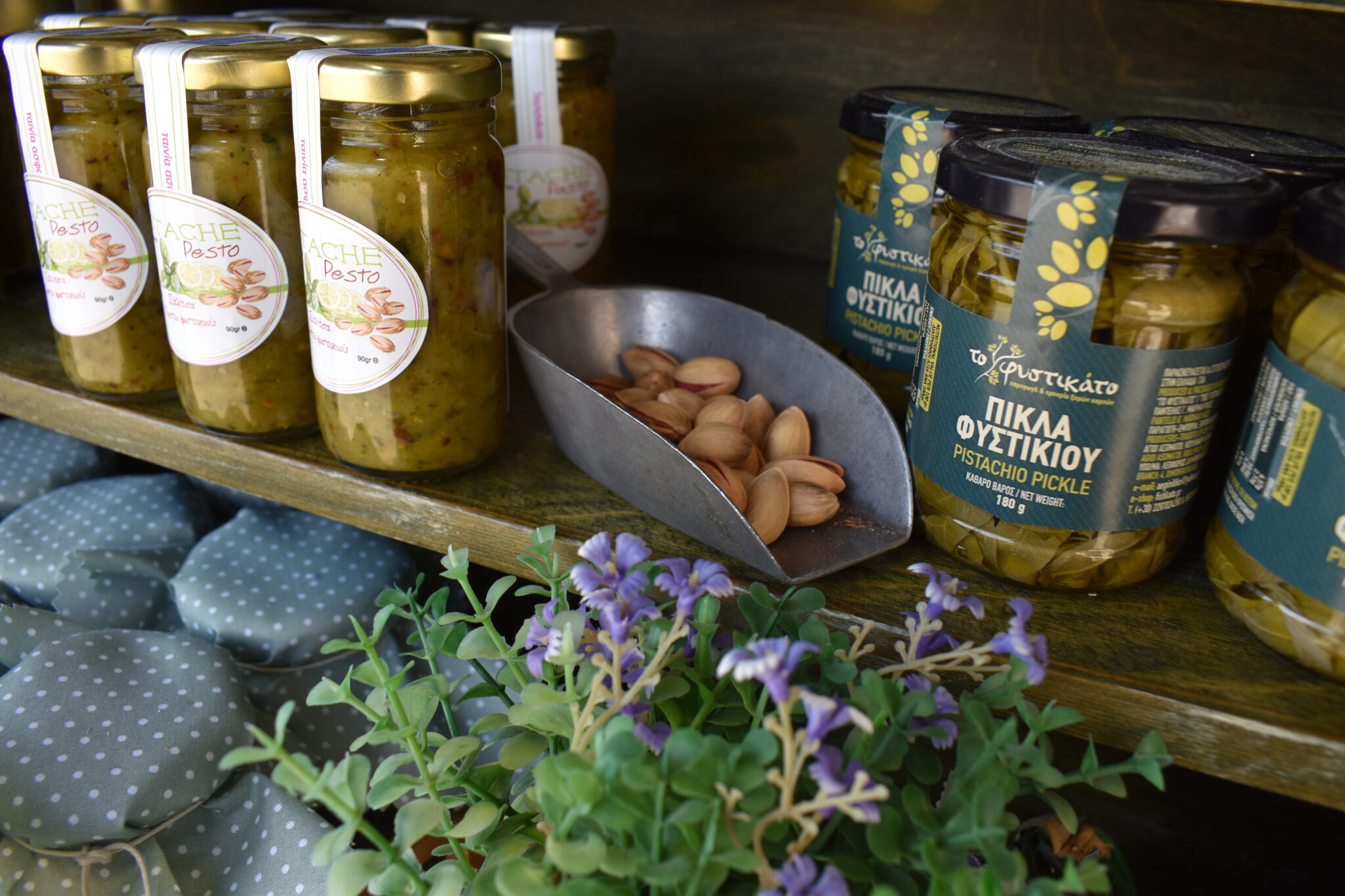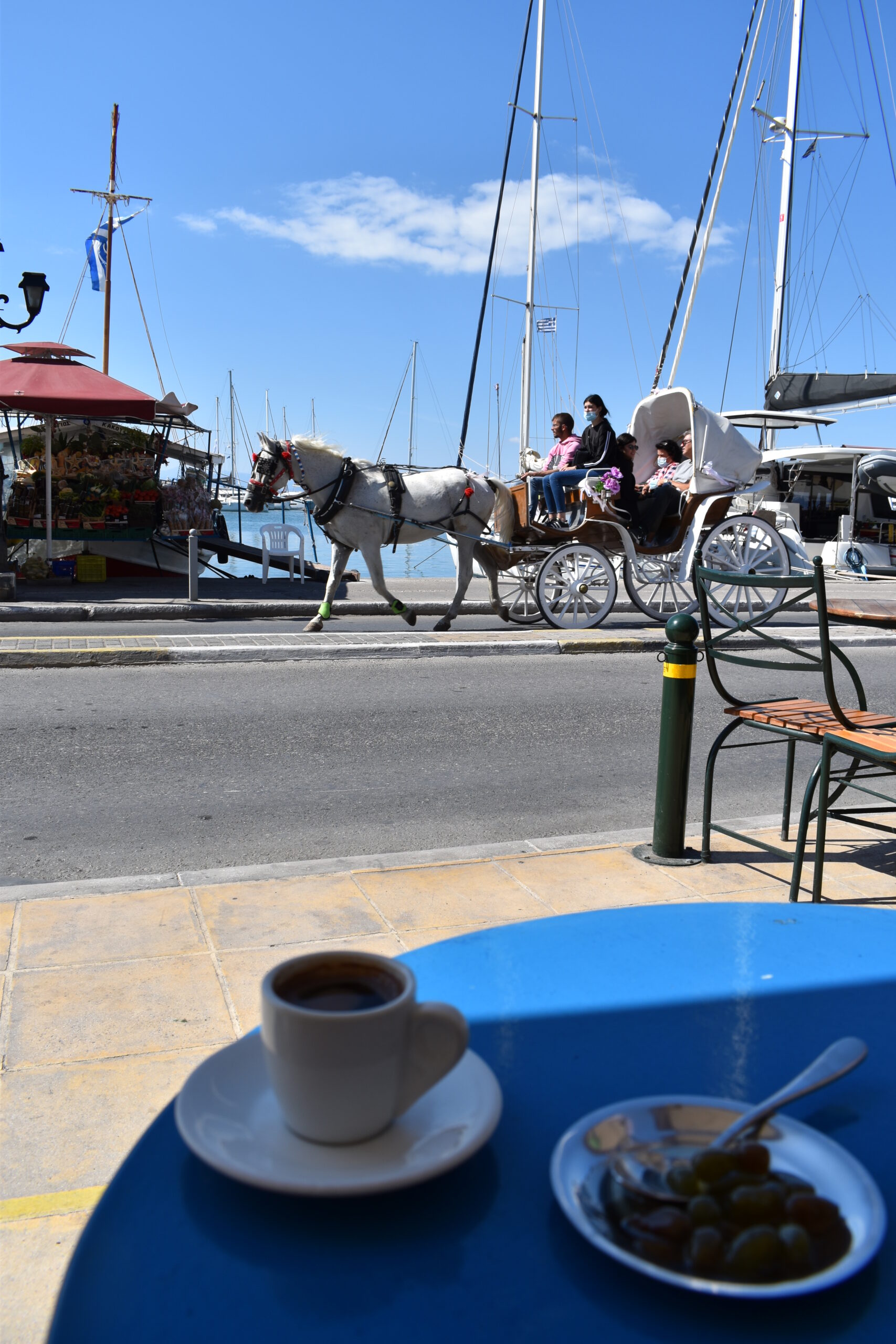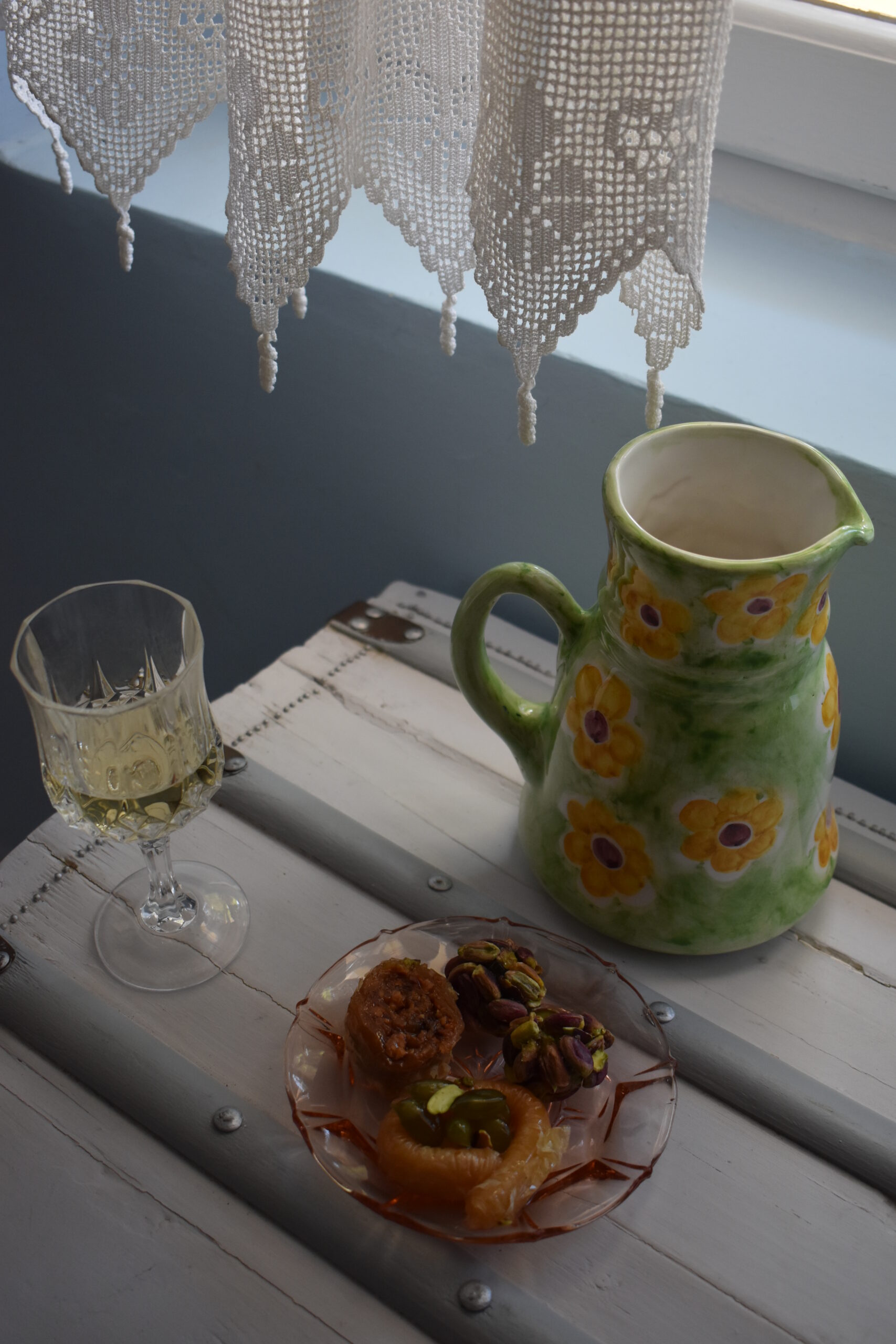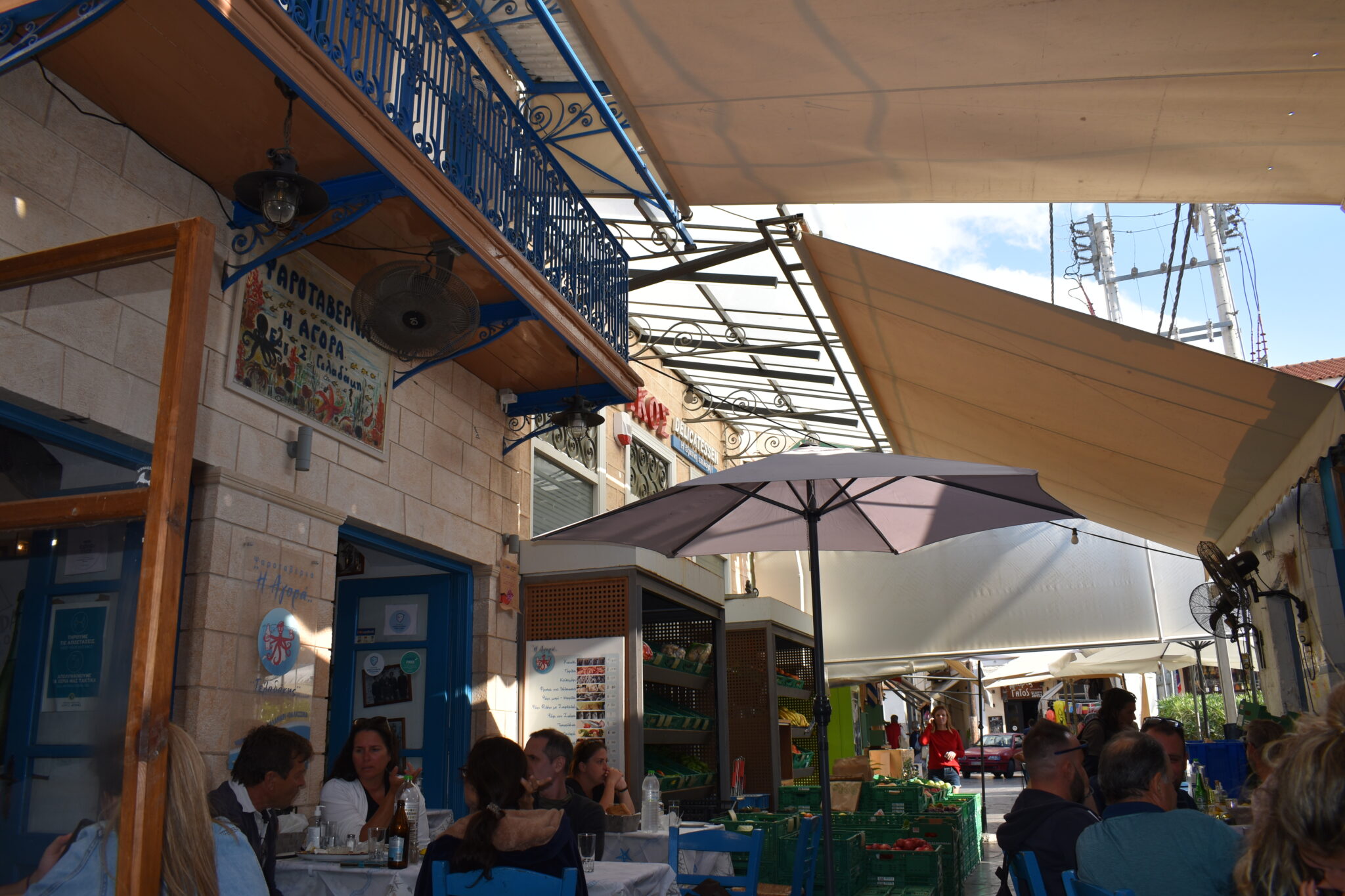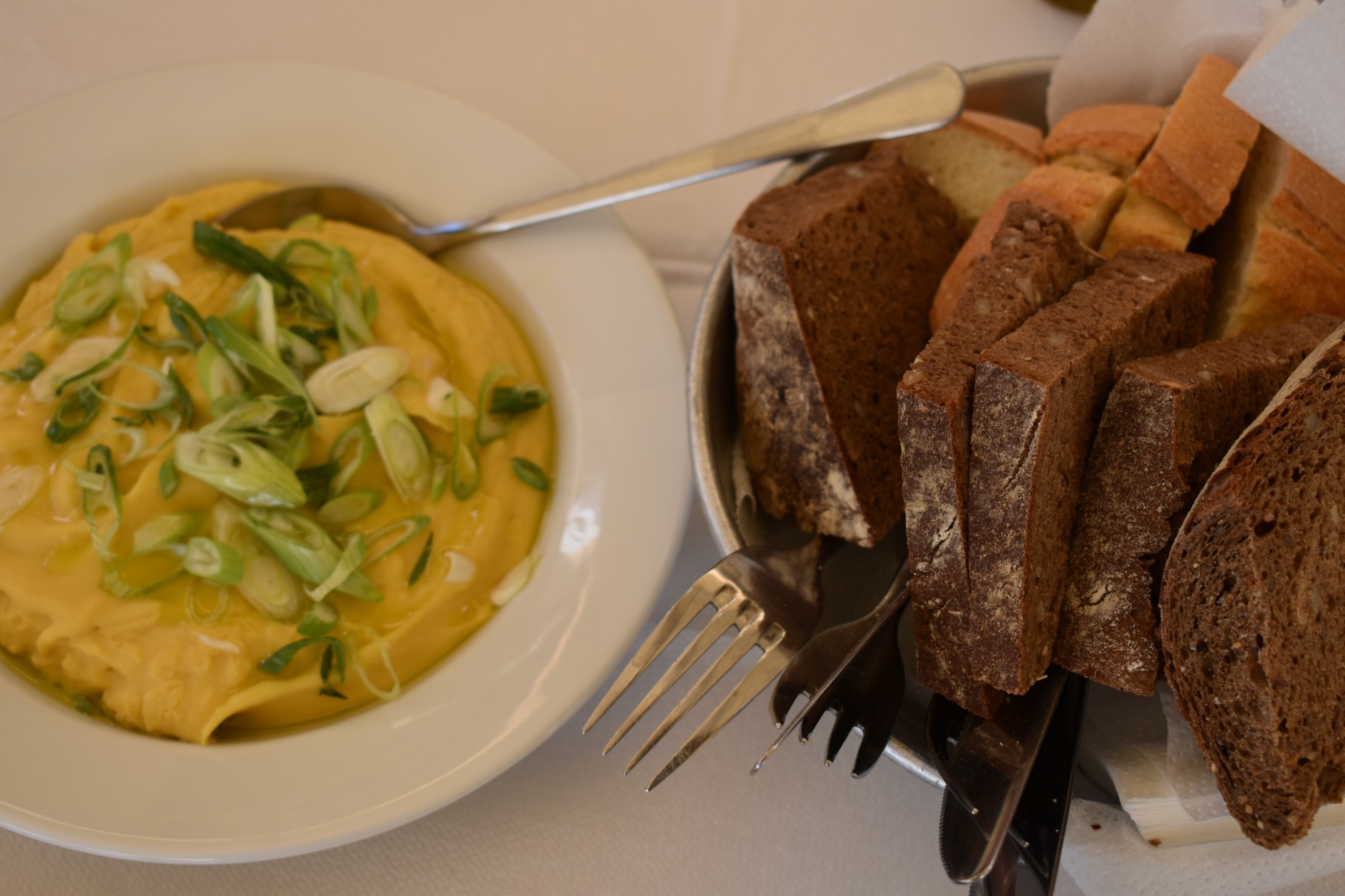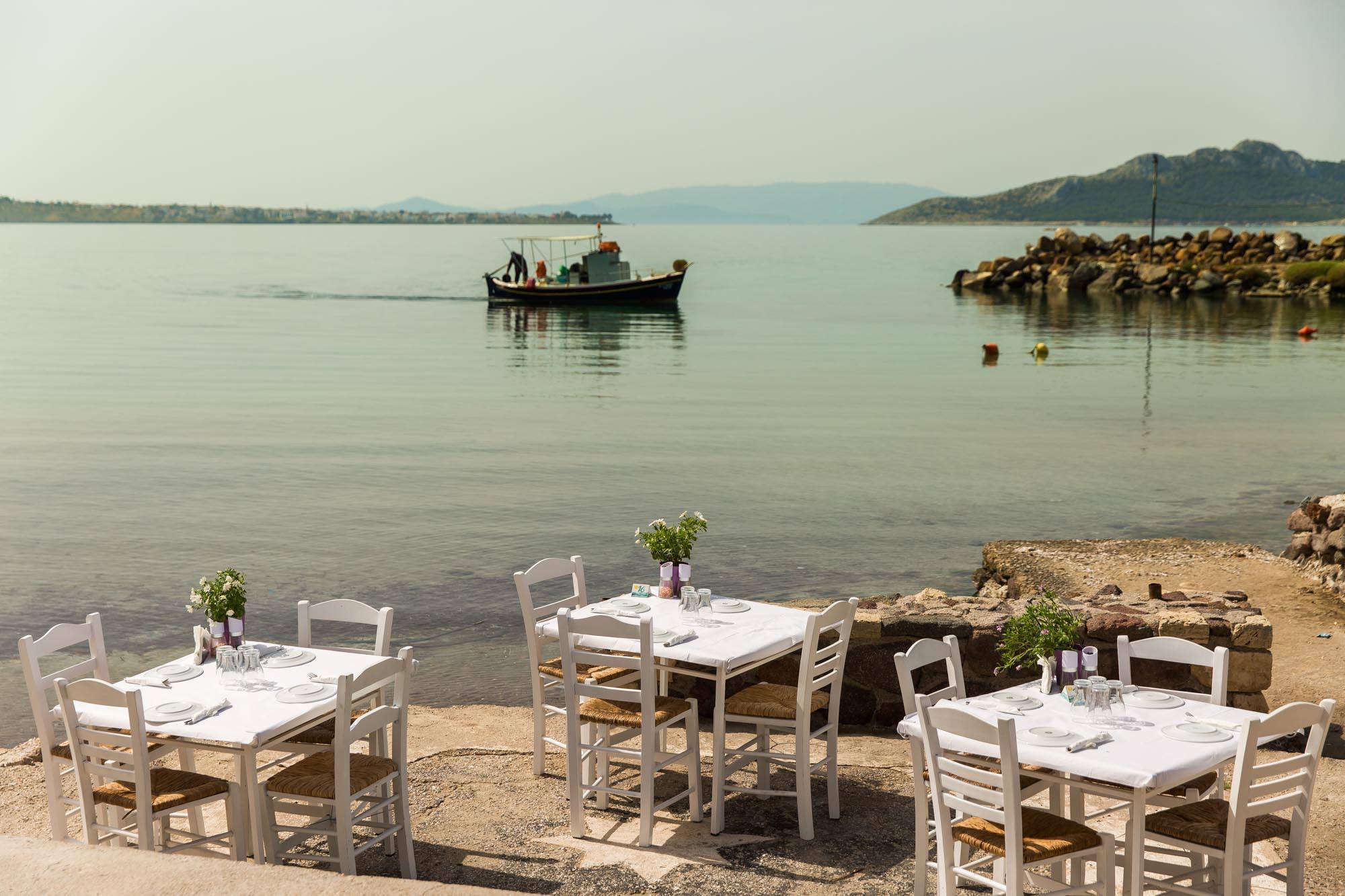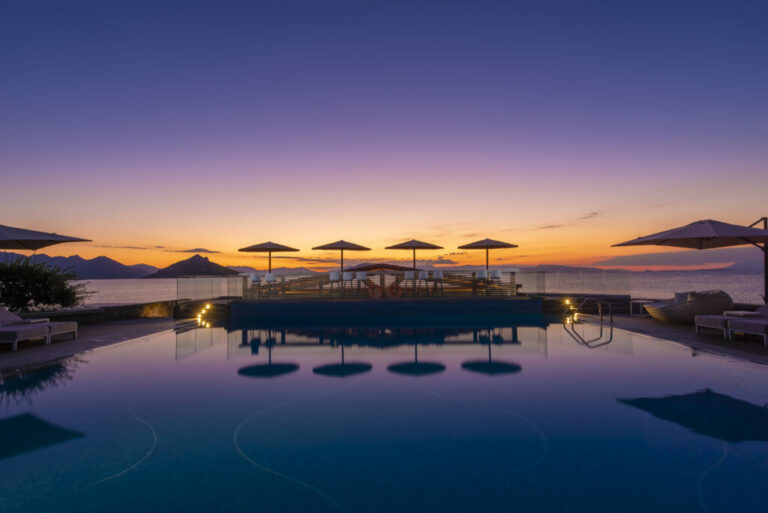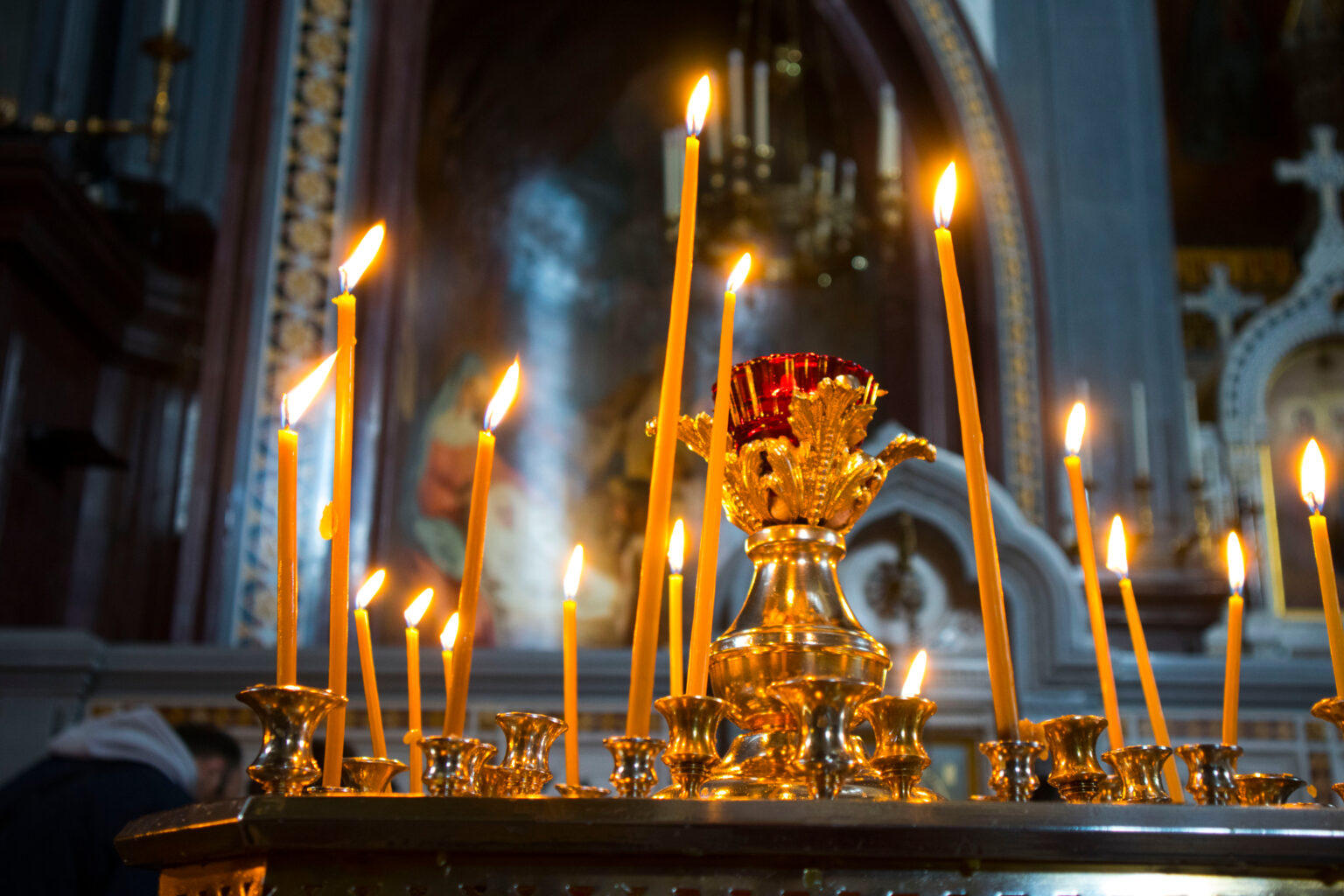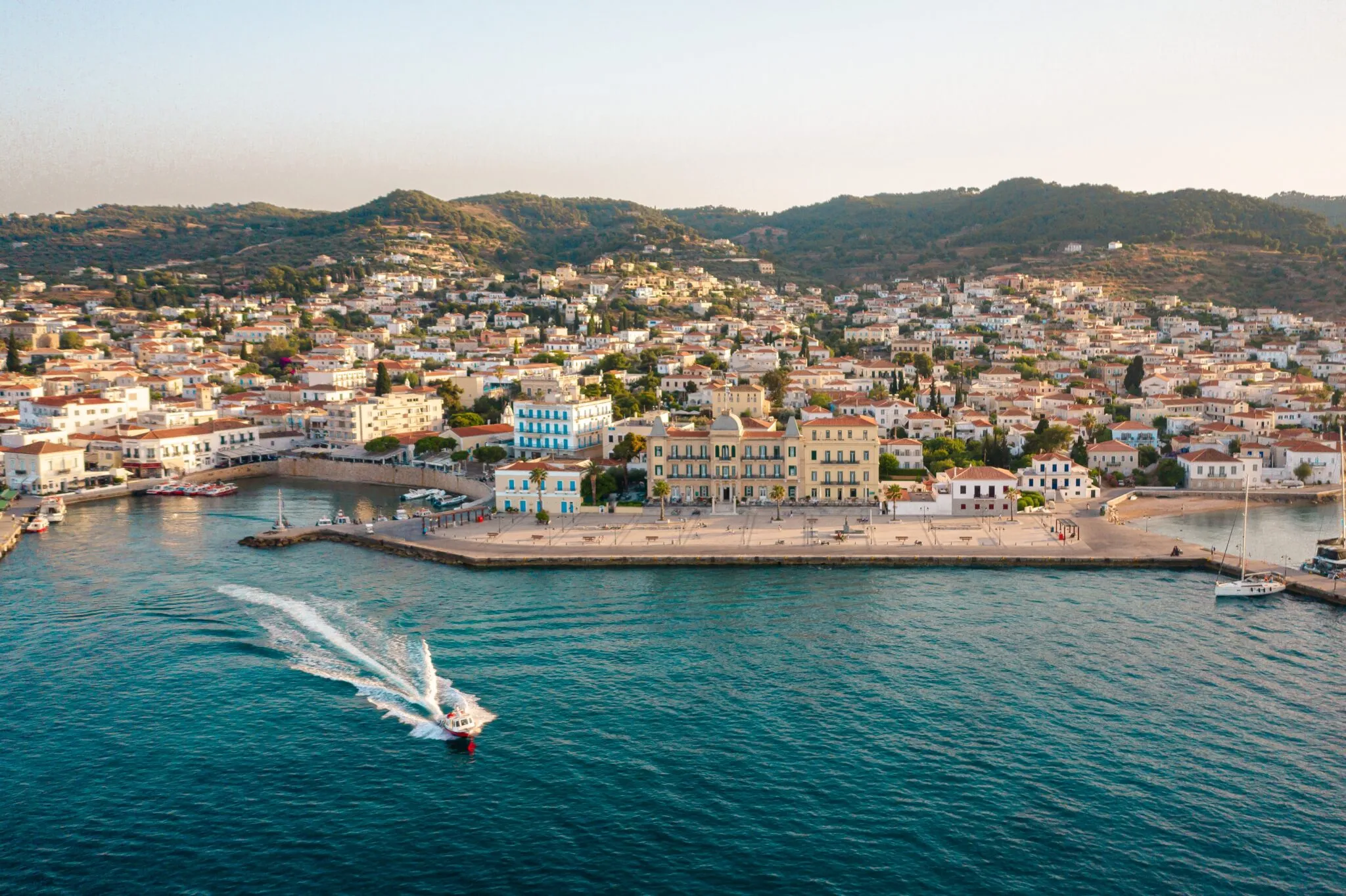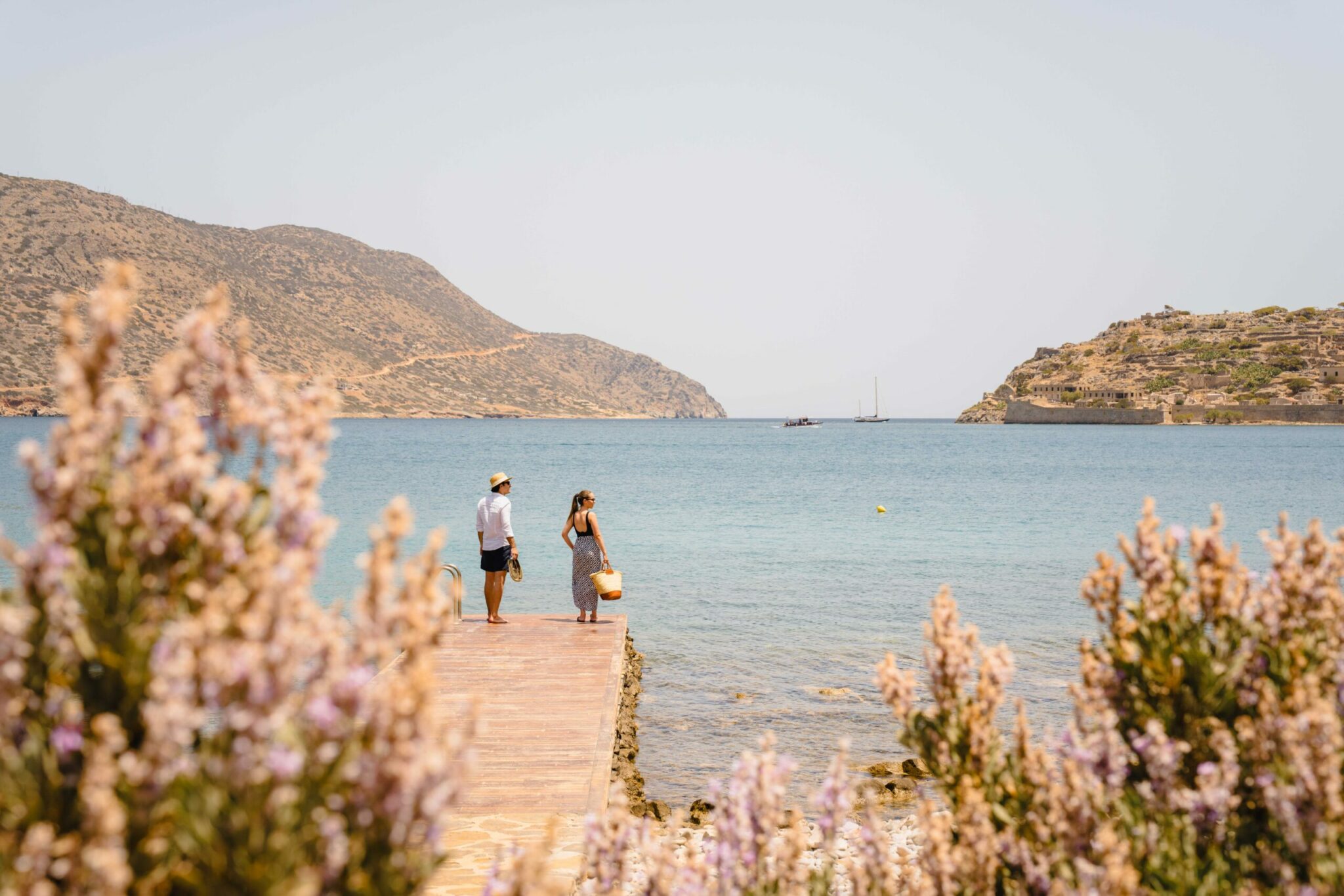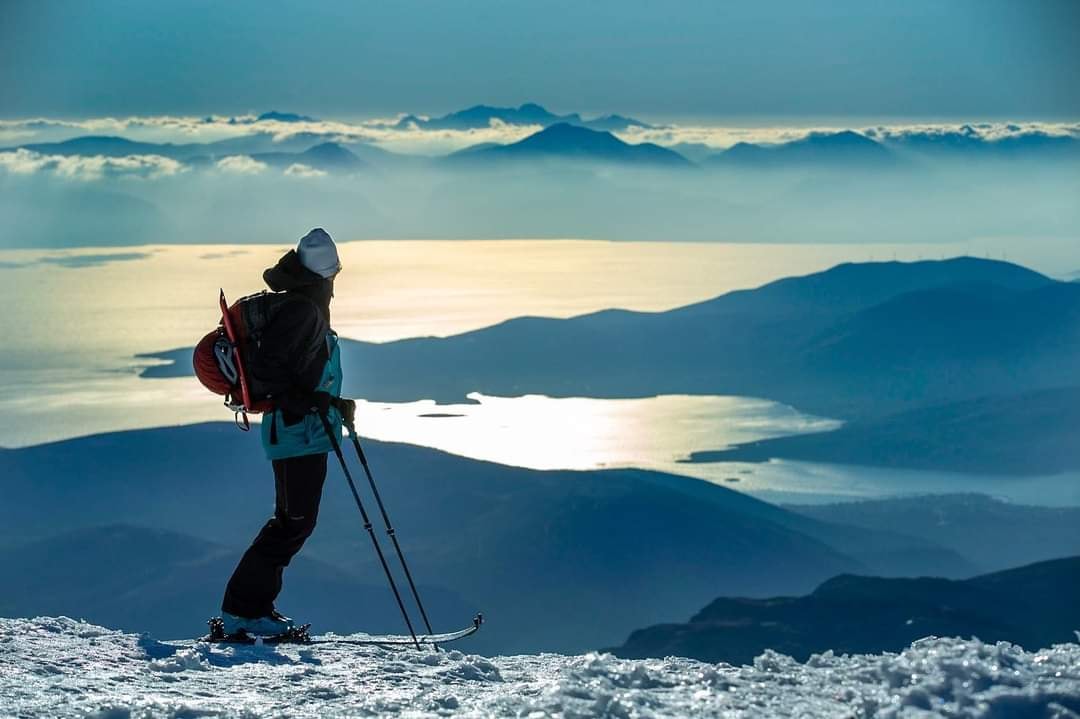Aegina is in the Argosaronic Gulf, quite close to the coast of Attica, and is a beloved island by the residents of Attica as it’s great for a day trip regardless of the season, either to go swimming at one of its beautiful beaches or to walk around its picturesque alleys.
The ancient remains reveal Aegina’s long course, and the blows it suffered, by those who wanted to conquer it with raids, looting, and destruction, have left their marks on the island’s monuments. In 1826, the city of Aegina was designated the first capital of the Free Greek State and thrived mainly due to trade, fishing, sponge diving, and limestone trade.
Throughout the years, the island has attracted important personalities, artists, and intellectuals. It has been loved by writers, sculptors and painters who chose it either as a permanent or as a holiday home, to which they returned each time to plunge into the depths of their inspiration. Today, Aegina remains a popular destination, mainly due to its proximity to Attica, but also due to its beauty and uniqueness.
The picturesque, whitewashed chapel of Agios Nikolaos at the entrance of the harbour welcomes visitors and prepares them for the island’s colour and style. Along the waterfront, colourful fishing boats, yachts and sailing boats mix with each other, while in town, the imposing neoclassical buildings evoke something of their past glamour.
Sandy beaches with wonderful, turquoise waters, seaside settlements with small bays, eucalyptus trees, olive trees, bright-coloured blooming bougainvillea trees, and, on the rocks, prickly pears in full bloom during the summer make up this little paradise.
In addition, you’ll see large areas covered in pistachio trees, since Aegina is famous for its pistachios, with the local variety being considered one of the best. In 1994, Aegina pistachio was included in the list of Protected Designation of Origin products
For an even more unique experience, you can visit Moni island, located very close to Aegina, and there you can admire deer, wild goats, squirrels and peacocks all living free on the island, that are, however accustomed to human presence.
Visit the museums and archaeological sites, try the hiking trails, admire the monasteries, churches and chapels, and wander through the ancient olive grove. And of course, make sure to try the famous Aegina pistachios, which are available in every possible version.
What to do
Folklore Museum: Housed in a neoclassical building dating back to 1828, in the heart of the city. The first floor is the “Aegenean House” and includes heirlooms of the Iriotis family, the library, the letters, and the archive of Panagis Iriotis, as well as old furniture, engravings, paintings, traditional and urban costumes, Aegina kopaneli lace, embroidered linen and various decorative objects.
On the ground floor, there is a reproduction of a typical “Village house” with objects of everyday use, weaving tools and textiles, agricultural tools, as well as the “Fisherman’s House” with fishing and sponge diving tools, and miniature ship models.
Christos Kapralos Museum: This is the former residence of the eminent sculptor, that has turned into a museum and is an annex of the National Gallery. It is located on Nikos Kazantzakis avenue, where you will also see the houses of other prominent personalities. The great Greek writer Nikos Kazantzakis and the famous artist Yannis Moralis had residences here, but they are not open to the public. As you approach the location Plakakia, you’ll notice a magnificent bronze statue depicting the touching expression of the “Mother” waiting for her sailor son. The exhibits include large-scale works, wood and plaster sculptures and paintings. The sea paintings, the self-portraits, and the human figures full of volume and plasticity dominate the space.
Temple of Aphaia: The Temple is located at the top of a pine-covered hill and dates to 500 BC. Originally the site was dedicated to the local goddess, Aphaia, who came to be identified with Athena. Its impressive architecture is an attraction for Greek and foreign visitors alike. It is of Doric order and is built with local limestone. It is in very good condition and 24 of the temple’s 34 columns still survive.
In the Archaeological Museum of Aphaia there are exhibits and reconstructions of the old temple, which was built in 575 BC and was burnt down in order to build the temple that survives today. (Aphaia, Aegina, tel.: 0030 22970 32398)
Archaeological Site of Kolona: Located near the port of Aegina, like the Archaeological Museum of Aegina. It got its name due to Venetian sailors, who used the columns of the temple of Apollo, located in the area, for orientation. One of the most important settlements of the prehistoric era, which thrived during the Bronze Age, is also located at the site.
Archaeological Museum: It is built next to the ruins of the prehistoric settlements and the ancient acropolis. The exhibits come mainly from the archaeological site of Kolona and cover the period from prehistoric times to Roman times. You can see large urns of the Early and Middle Helladic period, ceramics of the Geometric and Archaic periods, Aegenean painted sculptures from the 7th to the 5th century BC, fragments of the pediments of Aphaia, part of the Kapodistrian collection of reliefs, etc. (tel.: 0030 2297 022248. www.odysseus.culture.gr)
Palaiochora: is an abandoned medieval settlement which has been nicknamed the “Mystras of Aegina”. From Byzantine times until the beginning of the 19th century, it was the island’s central settlement. It’s located on a hill, in the north part of the island, above the monastery of Agios Nektarios. It was looted and destroyed by constant pirate raids and today there remain about 35 churches of the 360 that existed in the settlement.
Ancient Eleonas: A unique natural monument, where century-old olive trees stand proudly despite the years and the weather, their trunks unfolding like sculptures. It is no coincidence that in 2005 the olive grove was chosen by the fashion house Hermès as the setting of its photoshoot for its new collection. The trees are estimated to be over 400 years old, with some of them estimated to be 1500 years old.
Tower of Markellos: Its construction dates to around the 17th century and is considered to have been part of the Venetian harbour fortification operating as a watchtower. The tower was renovated in 1802, by the Aegenean Revolutionary fighter Spyridon Markellos, from whom it takes its name. During the 1821 Revolution, it hosted Greek fighters and politicians. Nowadays, the tower is usually closed, opening occasionally to host art exhibitions and artistic events.
Agios Nektarios Monastery: The convent is home to 14 nuns and is located on the road to Agia Marina. It is one of the most important pilgrimage places of Orthodoxy, with many believers visiting it every year.
Hiking: The island has many hiking trails and is part of the “Monopatia Politismou” (cultural trails) network. The trails will lead you to ancient settlements, old windmills, and other remnants of Aegenean history. You will find trails for all levels of experience and the routes last from 40 minutes to five hours. In addition to the usual walking programmes, special excursions are occasionally organised.
(www.aegina-hiking.com, www.monopatiapolitismou.gr)
Visit the nearby islands: From Aegina you can take a boat, a highspeed boat, or ferry and visit Moni, Agistri, Methana, Poros, Hydra, Spetses, Porto Heli, Ermioni or Epidaurus. This way, you can explore all nearby destinations and beaches. (www.aeginacruises.com, www.westwaveboatrental.gr)
Pistachio Festival: If you find yourself in Aegina around the middle of September, visit the Aegina Fistiki Fest, dedicated to the island’s well-known product distinguished for its quality and taste. Producers exhibit pistachio and their derivatives, as well as a range of other products produced on the island, such as agricultural products, handmade ceramics, jewellery, embroidery, etc.
Where to swim
Moni Island: The island of Moni is across from Aegina, just 1800 meters from the settlement of Perdika. There, you’ll find turquoise waters, deer, wild goats, squirrels and peacocks that are however accustomed to human presence and you’ll be able to admire them at close range. The island is uninhabited, but it has a serviced beach and if you go early, you can easily find a sunbed and umbrella, and you can also go hiking.
You can take a boat from the port of Aegina, departing every 1 hour, but there are also smaller boats that run more frequently. Moreover, if you have your own boat, you can easily reach the beach, but you must remember that overnight stays are prohibited, for the protection of the island’s ecosystem.
If you choose to hike in Moni, you can climb up to the watchtower at the centre of the island, going up a hill covered in wild olive trees, cedars, and mastic bushes. It takes about 2 hours to get there and then back to the beach, so make sure to bring water, a hat and sunscreen.
If you prefer seclusion, free beaches, and underwater fishing, you can visit the other side of the island, which faces Aegina and is rocky; there’s a beautiful beach with deep and crystal-clear waters there.
Klima: One of the most popular beaches in Aegina. It combines sand and pebbles and has clear, shallow waters. The beach is serviced, with a beach bar and sunbeds. Ideal for families with young children because it’s protected from the wind and the sea never gets waves. There is lots of space for parking.
Agia Marina: One of the most famous beaches on the island, the largest sandy beach. It is serviced and suitable for water sports. It has a beach bar, ouzeri taverns, and restaurants. The water is shallow and so suitable for families. Apart from the main beach, there are several secluded coves from where you can dive off high cliffs or go underwater fishing. At the end of the beach, you will find the homonymous chapel of Agia Marina.
Marathonas: The area of Marathonas has two sandy beaches, about 500 meters from each other. They are very popular, serviced beaches, with umbrellas, sunbeds and places to eat. Here, the only problem is parking, so many people choose to travel to the beaches by local transport. If you don’t like the crowds or don’t want to pay for an umbrella, there’s also space on the beach to set up your things.
Culinary identity
The most emblematic product of Aegina is the pistachio. The first pistachio orchard was established on the island in the late 19th century by Nikolaos Peroglou, who probably brought seeds from Syria. In 1994, the Aegina pistachio was included in the list of Protected Designation of Origin (PDO) products, and, in 1996, it was referred to as a PDO product in the official European Union newspaper.
The launch of the Fistiki Fest, in 2008, that celebrates this emblematic Aegina product, brought the pistachio back in the limelight and resulted in the promotion of the island’s rich culinary tradition.
Aegina boasts a significant fishing boat fleet and a fish market that has been in operation for more than 70 years. A fish that almost became extinct in the Argosaronic Gulf due to pollution but has managed to survive and is making a culinary comeback recently is the “katsoula” a fish that belongs to the red mullet family. Traditionally, it is fried in butter with tomato sauce. Another traditional recipe is “tiganosoupa”, a dish that consists of fish cooked in a pan with vegetables and very little water until a thick, tasty, broth forms.
Even though the island’s dairy tradition is not very well-known, it’s very interesting. The typical Aegina cheeses are the geremezi, a soft, sour cheese, the giaourtotiri, that consists of yogurt and feta, and the tsigara made with butter.
The Pistachio Festival inspired many chefs to create new savoury dishes with pistachio. Some of the very successful creations include garlic sauce with Aegina pistachio and pistachio pâté that is available almost everywhere on the island. In terms of sweets, pistachio is dominant everywhere: pistachio spoon sweet (traditional preserve), pistachio meringues, pistachio macarons, pistachio pasteli (traditional honey and sesame bar) etc.
The island is home to very few vineyards whose production is consumed on the island, they make retsina and amazing Liasto wine.
Where to eat
Ouzeri O Skotadis: Open since 1945, serving fish and seafood of the best quality, right on the port, overlooking the colourful fish boats. The current owner, Giorgos Likouris, incorporates modern techniques in the menu in an imaginative way, using local fresh fish and vegetables. The fried cod or fried stingray with garlic sauce, the raw fish, the seafood orzo all stand out. The wine and spirits lists is well-curated. (46 Dimokratias avenue, Aegina, tel.: 0030 97 024014)
AGORA: A cult tavern with a great ambience focused on seafood (also known as Geladakis) in a quaint alley right behind Aegina’s fish market. Their fried dishes are amazing, and they offer a wide selection of meze. (Ireoti Panagi str, Fish market, Aegina, tel.: 0030 2297027308)
Ahivadaki: Α seafront fish tavern with dishes from all around Greece and the Mediterranean. Try the Constantinople cuttlefish, the shrimp saganaki, the grilled sardines, the fried katsoula and red mullet. (Vrohia beach, Aegina, tel.: 0030 2297 024001)
Nontas: Historic tavern that’s been around for over 80 years. Right next to water, with the distinctive indigo floor, the wooden porch and the view of the Moni island, it serves fresh fish fried or grilled to perfection, as well as traditional pies made with village filo dough, and homemade spoon sweets. Make sure you order the tiganosoupa. (Perdika, Aegina, tel.: 0030 2297 061233)
Kavouropetra: Family-run tavern right next to the sea with a lovely view of the sunset. The seating area is on a covered veranda and the menu includes fresh fish, with great fried options, and amazing charcoal-grilled sardines and langoustine cous-cous. (Kavouropetra bay, on the way towards Souvala, Aegina, tel.: 0030 2297 023001)
Τo Steki Tou Kinigou: On the main square of a mountainous village, this tavern with the great ambience serves classic Greek casserole dishes and grilled meats. Try the rooster in tomato sauce with pasta, wild green pies baked in the wood-burning oven and charcoal-grilled steaks. (Anitseo, Aegina, tel.: 0030 2297031210)
Aeginitisa: A fish tavern on the homonymous bay with the sandy beach. They serve fresh fish and casserole dishes that change daily, prepared in the wood-burning oven. Their specialties include: seafood linguini, fried mussels with pistachio garlic sauce and octopus giouvetsi. (Perdika-Aeginitisa, Aegina, tel.: 0030 2297061546)
Where to stay
Lalibay Resort & Spa: Located in Perdika, in a lush spot, next to the sea. It has two restaurants, a beach bar on a private beach, a hammam, a heated swimming pool, a gym, and sports facilities. (Perdika, tel.: 0030 2297 061146, www.lalibay.gr).
Marini Luxury Apartments and Suites: 4 km from the centre of Aegina, overlooking the harbour and the surrounding islands. It offers luxury apartments and suites with modern design. (Aegina, tel.: 0030 2297 029027, www.mariniluxurysuites.com).
Angelina Boutique Escape: A 34-room hotel with stone buildings, a swimming pool, a pool bar and sun loungers. It offers a buffet breakfast. (Perdika, tel.: 0030 2297 061233 www.angelina-aegina.gr)
Read also:
Christos Kapralos Museum on Aegina: Visiting the prominent sculptor’s home and studio
A long spring weekend in Aegina -7 unique experiences
Tour of Aegina, Greece – Neoclassical buildings, pistachios and archaeological sites



